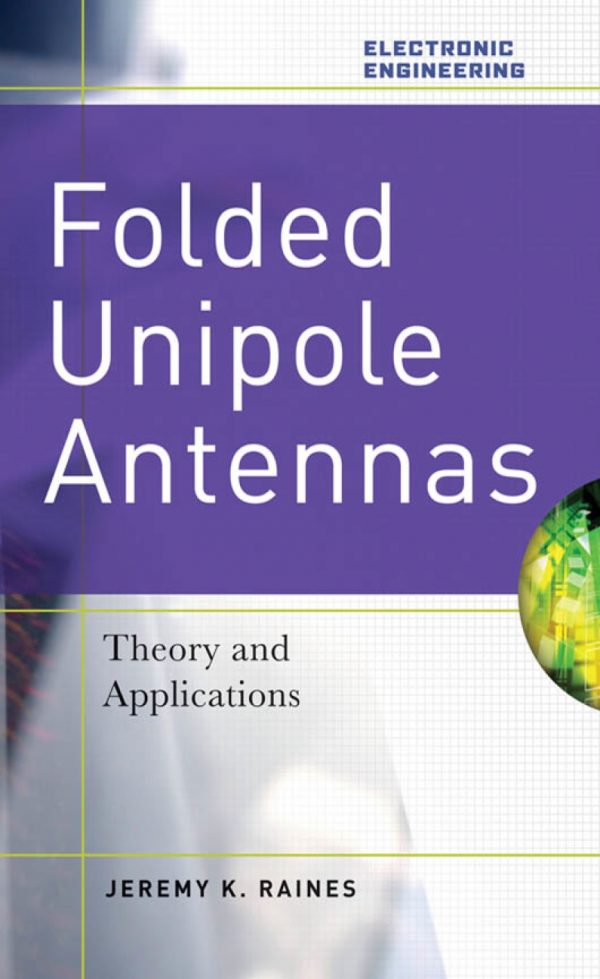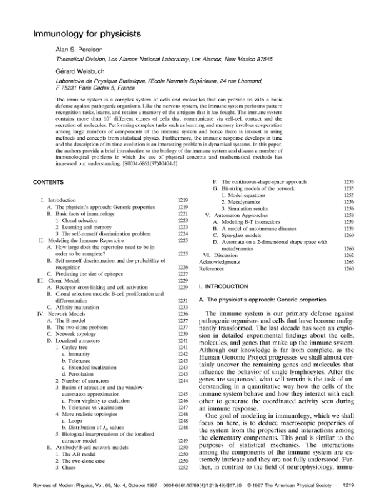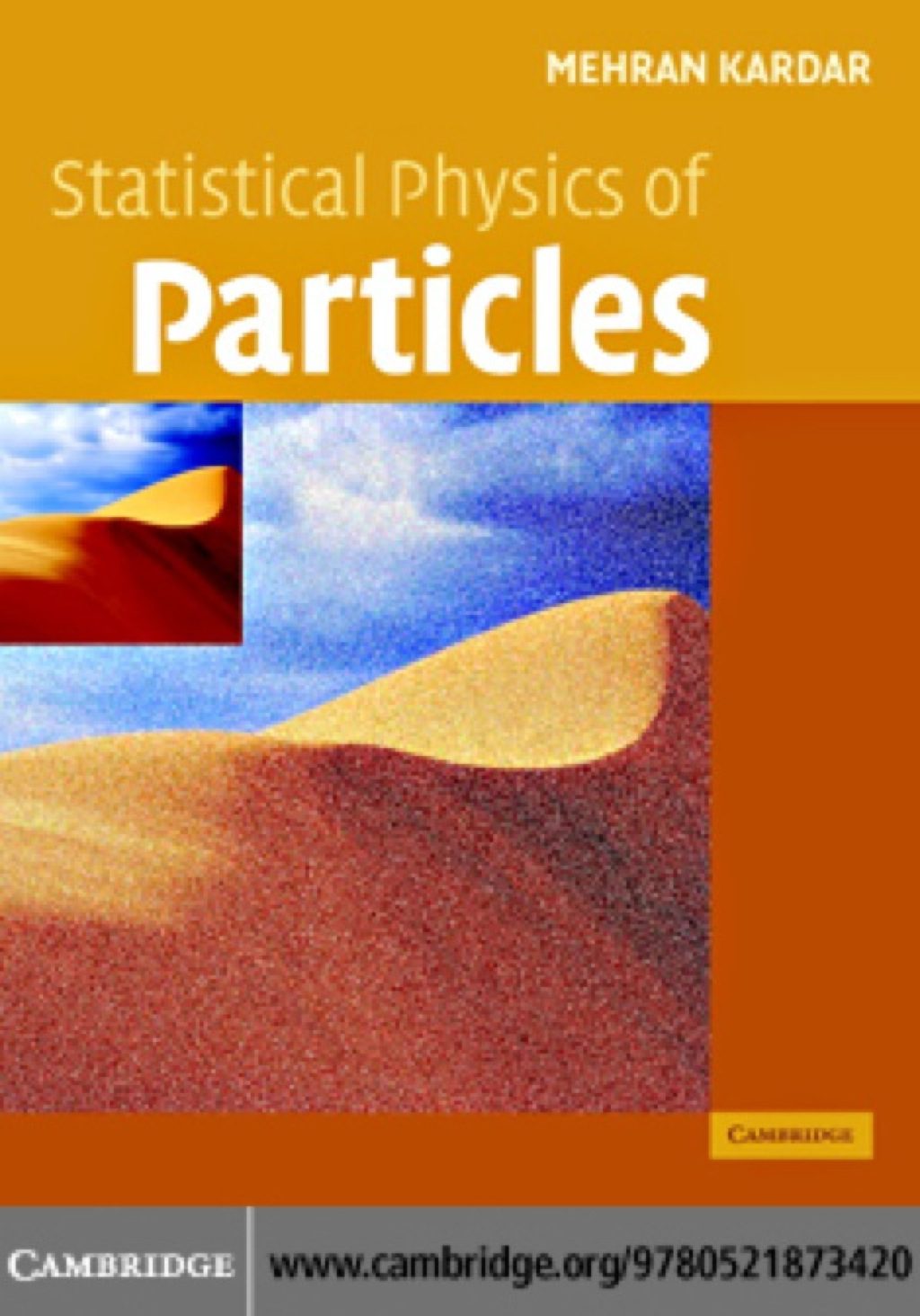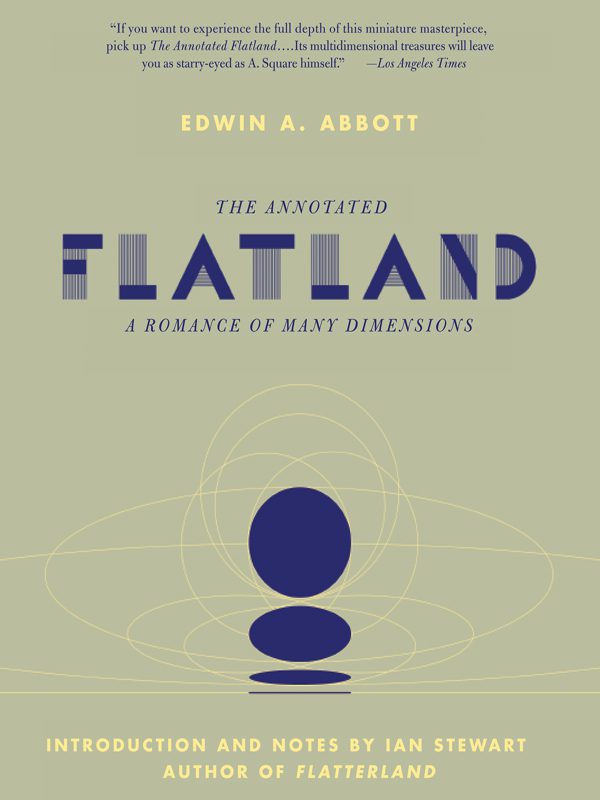D. Bruhn, L. Burlini (Editors)1862391785, 9781862391789, 9781429467520
Also available:
Deformation Mech from Minerals – ISBN 1862391769 The Initiation, Propagation, And Arrests of Joints And Other Fractures – ISBN 1862391653 Deformation Mechanisms, Rheology and Tectonics: Current Status and Future Perspectives – ISBN 1862391173
Table of contents :
Contents……Page 6
Preface……Page 8
High-strain zones: laboratory perspectives on strain softening during ductile deformation……Page 10
Fig.1. Second invariant of crustal strain rate associated with plate motion ………Page 11
Fig.2. Relationships between deformation mechanisms with pressure, temperature, stress and strain rate. ………Page 12
Fig.3. Comparison between the diagonal cut cylinder and the torsion techniques ………Page 14
Fig.4. Pictures of monomineralic samples deformed in torsion to large strains, ………Page 15
Fig.6. An example of shear stress vs. shear strain curve for an ………Page 16
Fig.7. Microphotographs under cross polar of Carrara marble deformed in torsion ………Page 17
Fig.9. Pictures of polyphase samples deformed in torsion to large strains, ………Page 18
Fig.10. Map of deformation mechanisms of calcite aggregates for a strain rate ………Page 20
Fig.11. Summary of the evolution of shear stress, amount of recrystallization, ………Page 21
Shear strain localization from the upper mantle to the middle crust of the Kohistan Arc (Pakistan)……Page 34
Fig.1. Sketch map of the Kohistan Complex (modified from Bard 1983 and Burg et al. 1998)…….Page 35
Fig. 2. Indus river section located in Figure 1. Gamet in and out ………Page 36
Fig.3. Interlayered dunites and clinopyroxenite dykes. Arrow: intersection between clinopyroxenite ………Page 41
Fig.5. Angular hornblendite enclaves (dark) welded by leucocratic veins derived from the ………Page 42
Fig.8. Volcano-sedimentary sequence of the Kamila Amphibolite sensu stricto. ………Page 43
Fig.9. Variably deformed granite veins intruding the volcano-sedimentary sequence of the Kamila ………Page 44
Fig.10. Map (located in Fig. 1) of the magmatic and solid-state foliations ………Page 45
Fig.13. Synthetic sketch of anastomosing ductile shear zones. Partial melting in ………Page 46
Fig.14. Comparison of the strain ratio across the Riedel shear zone ………Page 47
Fig.16. Mylonites with quartz–plagioclase–garnetbearing segregation veins. ………Page 48
Flow of partially molten crust and origin of detachments during collapse of the Cordilleran Orogen……Page 53
Fig.1. Fixed-boundary and free-boundary modes of collapse (modified from Rey et al. ………Page 54
Fig.2. (a) Regional geological map of the Shuswap MCC showing dome structures along ………Page 56
Fig.3. (a & b) Scanned images of thin sections from Thor–Odin Dome ………Page 58
Fig.4. (a) P–T paths of middle unit and lower unit in the Thor–Odin ………Page 60
Fig.5. Summary of thermochronologic study (Vanderhaeghe et al. 1999, 2003b; Lorencak ………Page 61
Fig.6. Photomicrographs of leucogranite samples used to determine conditions of deformation ………Page 64
Fig.7. (a) Average AMS lineation (K[sub(1)] direction) for each location (the numbers next ………Page 65
Fig.9. Anisotropy of magnetic susceptibility data. Graphs of relations between K[sub(m)] ………Page 68
Fig.10. Equal-area, lower-hemisphere stereonets showing the average AMS K[sub(1)] ………Page 69
Fig.11. Maps showing shear sense for AMS sample locations that exhibit: ………Page 71
Fig.12. (a) Schematic cross-section of the Canadian Cordillera with a fold–thrust ………Page 72
Table 1. Representative mineral compositions from metapelitic rocks: mantling gneiss (MG) and dome*……Page 59
Table 2. U–Pb analyses of monazite from the Thor–Odin region ………Page 63
Table 3. Low-field magnetic data for the Ladybird leucogranites*[sup(†)]……Page 66
Geometric aspects of synkinematic granite intrusion into a ductile shear zone – an example from the Yunmengshan core complex, northern China……Page 79
Fig.1. General map of the Yunmengshan granodiorite core complex, after Davis et al. ………Page 80
Fig.2. Schematic map of the NE Yunmengshan granodiorite with the approximate ………Page 81
Fig.3. (a) General structure of the Sihetang shear zone in outcrop C of ………Page 82
Fig.4. Part of outcrop A in Figure 2 looking north, seen from the outcrop ………Page 84
Fig.5. Composite image of outcrop B in Figure 2 looking north. The age relationship ………Page 85
Fig.6. (a) Lower part of an S[sub(m)]-surface in metadiorite in outcrop B of Figure 5 showing ………Page 86
Fig.7. (a) Schematic block diagram showing the 3D interpretation of vein geometry in the ………Page 87
Fig.8. Several types of mesostructures recognized in the Sihetang shear zone ………Page 89
Fig.9. (a) The present geometry of veins in the shear zone cannot ………Page 91
Fig.10. Possible modes of deformation in a gently dipping ductile shear zone ………Page 92
Table 1. Average temperature estimates (including standard deviations) for studied samples*……Page 83
Laramie Peak shear system, central Laramie Mountains, Wyoming, USA: regeneration of the Archean Wyoming province during Palaeoproterozoic accretion……Page 95
Fig.1. Geological index map of Precambrian rocks and selected Phanerozoic structural ………Page 97
Fig.2. Structural geological map of a part of the Laramie Peak shear ………Page 98
Fig.3. Geological map of the South Mountain area, Albany County, Wyoming, ………Page 103
Fig.4. (a) Pinstripe foliation in mylonitic granitic gneiss, Fletcher Park shear zone, ………Page 104
Fig.5. Montage of deformational features and characteristics of members of the c. 2.01 Ga ………Page 106
Fig.6. (a) Photograph and (b) sketch of outcrop of Archean migmatitic banded gneiss ………Page 108
Fig.7. Montage of equal-area, lower-hemisphere projections of structural data ………Page 109
Fig.9. Synoptic summary of lineation data from the Laramie Peak shear system…….Page 111
Fig.10. Some tectonic models for the evolution of the Laramie Peak shear ………Page 115
Table 1. Summary of Archean–Mesoproterozoic events in the central Laramie Mountains, Wyoming, USA……Page 107
Seismic and aseismic weakening effects in transtension: field and microstructural observations on the mechanics and architecture of a large fault zone in SE Tibet……Page 123
Fig.1. Neotectonic map of greater region of SE Tibet after Armijo et al. ………Page 125
Fig.2. Shaded contour map of NE YGRS area showing neotectonic data ………Page 127
Fig.3. Cross-section (line of trace noted in Fig. 2): colours are (left to right): ………Page 129
Fig.4. Cross-section (line of trace noted in Fig. 2): colours are as for Fig. 3 except: ………Page 131
Fig.5. Crossed polars and plane polarized light photomicrograph detail of (A–D) ………Page 135
Fig.6. Outcrop appearance of exhumed DJSZ. (A) Axial-normal fracturing in slightly ………Page 136
Fig.7. Diagrammatic profiles illustrating mechanics and architecture of the DJSZ. All profiles ………Page 145
Table 1. Location of stations and parameters of the deviatoric stress tensor, DISZ stations……Page 140
Magnetic fabric and microstructure of a mylonite: example from the Bitterroot shear zone, western Montana……Page 157
Fig.1. (a) Geological setting of the Bitterroot shear zone (modified from Foster et al. ………Page 158
Fig.2. Backscattered electron images of two magnetites from samples (a) BR014, core A1 ………Page 160
Fig.3. Hysteresis properties of 77 ferromagnetic drill core specimens (10cm[sup(3)]) ………Page 161
Fig.4. Results of AMS analyses for (a) the Sweathouse transect and (b) the Lost ………Page 162
Fig.5. Averaged AMS data for all 22 stations on equal-area, ………Page 167
Fig.6. Relationship between: (a) magnetic anisotropy, P[sub(j)], and susceptibility, K[sub(m)]; ………Page 168
Fig.7. Comparison of (a) rock fabric, as shown in thin sections used for ………Page 169
Fig.8. Rose diagrams oriented in a nearly vertical plane looking north, ………Page 170
Fig.9. Rose diagrams oriented in a nearly vertical plane looking north, ………Page 171
Fig.10. Comparison of AMS fabric and mineral fabric ellipses, calculated using ………Page 172
Fig.11. Spatial distribution of magnetic results in (a) the Lost Horse transect ………Page 173
Fig.12. Rolling-hinge model for exhumation of the Bitterroot metamorphic core ………Page 175
Table 1. Low-field magnetic data for the Bitterroot shear zone……Page 163
Electrical conductivity images of active and fossil fault zones……Page 179
Fig. 1. Geodynamic settings of case studies discussed in this paper. (a),(b),(c) The brittle upper ………Page 180
Fig. 2. The range of electrical resistivity in Earth materials. Resistivities of fluid-bearing rocks are largely ………Page 181
Fig. 3. Symmetries in Earth conductivity structure reflected in the MT impedance tensor (Z). (a),(b) ………Page 182
Fig. 4. Expected and observed behaviour of induction vectors (IV) for two different fault structures. ………Page 183
Fig. 5. Hollister and Parkfield resistivity models after Bedrosian et al. (2002) and Unsworth & Bedrosian (2004), ………Page 185
Fig. 6. Coincident magnetotelluric and seismic tomography sections crossing the Arava Fault (AF) ………Page 186
Fig. 7. Resistivity models of the West Fault modified after Hoffmann-Rothe (2002). Sites are depicted ………Page 188
Fig. 8. Resistivity models of the Damara belt, Namibia modified after Ritter et al. (2003b) and Weckmann ………Page 189
Fig. 9. Interrelation of the conceptual model of large-scale strike-slip fault zones with electrical ………Page 191
Fig. 10. A range of end-member models for ductile shearing in the lower crust and upper mantle: ………Page 194
Table 1. Comparison of fault-zone conductivity structure (modified after Hoffmann-Rothe 2002). ………Page 190
High-temperature and pressure seismic properties of a lower crustal prograde shear zone from the Kohistan Arc, Pakistan……Page 201
Fig. 1. Location map of the studied shear-zone sample 90/02/01…….Page 202
Fig. 3. Sample 90/02/01. Black circles: drilled cores. Note abundant garnet (grt) in the mylonite. Long edge of ………Page 203
Fig. 4. Sarangar gabbro, from protolith to mylonite. Microphotographs (a)–(c), (e) & (f) top are with parallel ………Page 205
Table 2. Representative (averaged, n is the number of analyses) chemical composition of plagioclase, ………Page 206
Fig. 7. Mineral chemistry of pyroxenes. Nomenclature after Morimoto (1988)…….Page 207
Fig. 8. Mineral chemistry of amphibole: the uppermost diagram shows the ranges of the measured ………Page 208
Fig. 9. Experimental set-up for the room temperature and high-pressure measurements…….Page 209
Fig. 10. Experimental set-up for the high-temperature and high-pressure measurements…….Page 210
Fig. 12. Variation of V[sub(p)] velocities with temperature. Data recalculated to 0.5 GPa. Same samples and definition ………Page 211
Table 3. V[sub(p)] at 0.3 GPa pressure and room temperature, density, anisotropy and acoustic ………Page 212
Table 4. V[sub(p)] pressure and temperature derivatives. The pressure derivative (in km s[sup(-1)] GPa[sup(-1)]) were calculated in the range 0.25–0.5 GPa. The ………Page 213
Fig. 16. Seismic properties at 600 °C and 0.5 GPa. V[sub(p)] in km s[sup(-1)], anisotropy in % and acoustic ………Page 214
Table 1. Major-element chemical composition of the Sarangar gabbro……Page 204
Damage and recovery of calcite rocks deformed in the cataclastic regime……Page 217
Fig. 1. Schematic diagram of the triaxial high-pressure cell installed at the Laboratoire ………Page 218
Fig. 3. Differential stress v. axial strain in the four tests presented in this paper. ………Page 220
Fig. 4. Coupled evolution of volumetric strain and elastic wave velocities as a function ………Page 221
Fig. 5. Coupled evolution of volumetric strain and elastic wave velocities as a function ………Page 223
Fig. 6. Solnhofen limestone and Carrara marble relaxation experiments in the dry regime ………Page 224
Fig. 7. Carrara marble sample Ca#02 relaxing in the wet regime. ………Page 225
Fig. 8. Solnhofen sample So#03 when relaxing in the wet regime. ………Page 226
Fig. 9. Series of secondary electron SEM images of (a) and (b) intact, (c) and (d) ………Page 228
Fig. 11. Optical micrographs in (a) reflected light and (b) cross-polarized light of deformed ………Page 229
Table 2. Compilation of stress values at which the onset of dilatancy ………Page 230
Fig. 13. Comparison of our results to those previously obtained by Baud et al. ………Page 232
Fig. 14. Schematical deformation map in the principal stress space for calcite rocks ………Page 233
Table 1. Composition, initial porosity, grain size and elastic wave velocities at atmospheric ………Page 219
Table 3. Compilation of stress values at which the onset of compaction ………Page 231
Effects of bedding and foliation on mechanical anisotropy, damage evolution and failure mode……Page 237
Fig. 1. (a) Orientation of the three sampled elements. The velocity measurements ………Page 239
Fig. 2. (a) P wave velocity data in dry Bentheim sandstone samples X, Y and Z, ………Page 240
Fig. 3. (a) P wave velocity data in dry Rothbach sandstone samples X, Y and Z, ………Page 242
Table 2. Anisotropy of magnetic susceptibility, permeability and electrical conductivity. For AMS ………Page 243
Fig. 5. (a) SEM image in one of the compact layers in Rothbach sandstone. ………Page 244
Fig. 7. (a) Sketch representing the anisotropy in cementation length in the Rothbach sandstone. ………Page 245
Fig. 8. (a) Peak stress as a function of bedding angle β for selected data on phyllite ………Page 246
Fig. 9. (a) Stress for the onset of dilatancy and (b) peak stress as functions of foliation ………Page 248
Fig. 11. Schematic diagram of a wing crack nucleated from a sliding crack. ………Page 249
Fig. 12. Friction coefficient as a function of foliation angle β from dilatancy onset data ………Page 250
Fig. 13. Inferred value of initial damage (solid circles) and normalized fracture ………Page 251
Fig. 15. Peak stress for Rothbach sandstone (this study) and Adamswiller sandstone ………Page 252
Fig. 16. (a) Peak stress as a function of bedding angle β for selected data ………Page 253
Fig. 17. Mosaic of optical (reflection) micrographs showing part of the shear ………Page 254
Fig. 18. Principal stress difference and rate of acoustic emissions per s v. axial ………Page 255
Table 3. Critical stress state C* at the onset of shear-enhanced compaction ………Page 256
Fig. 21. (a) Spatial distribution of specific crack surface area in a sample of Rothbach ………Page 258
Fig. 22. (a) Spatial distribution of specific crack surface area in a sample of Rothbach ………Page 259
Fig. 23. Principal stress difference and rate of acoustic emissions per s v. axial ………Page 261
Table 1. Petrophysical description of the anisotropic rocks……Page 241
Experimental deformation of flint in axial compression……Page 265
Fig. 1. Sample assembly…….Page 267
Fig. 2. Infrared spectra recorded at 78 K (liquid nitrogen)…….Page 268
Fig. 3. Stress–strain curves: (a) 1000 °C. (b) Strain rate of 10[sup(–3)] s[sup(–1)]. ………Page 270
Fig. 6. History dependence of stress–strain behaviour. ………Page 271
Table 2. Exponential and power-jaw constants……Page 272
Fig. 9. Stress–relaxation response after deformation at a constant strain rate to various strains. ………Page 273
Fig. 11. Optical microstructure. (a) Specimen 3258 (600 °C, 10[sup(–4)] s[sup(–1)], 234 MPa) in plane ………Page 274
Fig. 12. TEM microstructure. (a) Specimen 3241. Grains A and B have a square ………Page 276
Fig. 13. TEM microstructure. (a) Specimen 3243. Micro-twin out of contrast ………Page 278
Fig. 14. (a) Inverse pole figure for specimen 3264 (900 °C, 10[sup(–5)] s[sup(–1)], ………Page 280
Fig. 15. Detailed photometric investigation of specimen 3242 (900 °C, 10[sup(–4)] s[sup(–1)], 228 MPa). ………Page 281
Fig. 16. The superplastic models of (a) Ashby & Verrall (1973) and (b) Gifkins (1976, 1977) fitted ………Page 283
Fig. 17. The effect of specimen strain on the superplastic models of (a) Ashby & Verrall (1973) ………Page 284
Fig. 18. Grain size v. stress relationship for selected samples compared ………Page 285
Table 1. Flint deformation experiments……Page 269
High-strain deformation tests on natural gypsum aggregates in torsion……Page 291
Fig. 2. Set-up of the torsion experiment. (a) The torsion column, comprising the ………Page 293
Fig. 3. Shear stress v. shear strain curves for iron and copper jackets,………Page 296
Fig. 4. Shear stress v. shear strain graphs obtained from torsion testing on gypsum specimens. ………Page 297
Fig. 5. Results from strain-rate stepping tests. Twist rate v. torque in a log–log plot. ………Page 298
Fig. 6 Microstructures at 70 °C (optical microphotographs between crossed polars with gypsum plate). ………Page 299
Fig. 7. Microstructures at 90 °C (microphotographs between crossed polars with gypsum plate). ………Page 300
Fig. 8. Microstructures at 130 °C (run PO385; microphotographs between crossed polars with gypsum plate). ………Page 301
Fig. 9. Microstructures observed within specimens deformed under (a) & (b) undrained (run PO393) and ………Page 302
Table 1. Test details……Page 295
The effect of grain size and melt distributions on the rheology of partially molten olivine aggregates……Page 305
Fig. 1. Photomicrographs of olivine + MORB aggregates. Light grey, ………Page 307
Fig. 2. Comparison of experimental data with constitutive equation for olivine + MORB. ………Page 309
Fig. 3. Grain size distributions representing the sum of all intercept lengths measured per size class. ………Page 310
Fig. 4. Pole figure contour plots of EBSD patterns of olivine a- and b-axes, showing contours ………Page 313
Fig. 5. Comparison of uniform stress case calculated from flow laws of olivine + MORB ………Page 314
Table 1. Experimental data……Page 308
Influence of phyllosilicates on fault strength in the brittle–ductile transition: insights from rock analogue experiments……Page 317
Fig. 1. Schematic of classical crustal strength profile, showing brittle–frictional behaviour ………Page 318
Fig. 2. (a) Schematic diagram of the model microstructure proposed by Bos & Spiers (2002b), ………Page 319
Fig. 3. (a) Schematic diagram of the ring-shear configuration used in this study. ………Page 320
Fig. 4. Shear stress and volume change v. displacement data for the dry run-in stage for samples ………Page 323
Fig. 5. Shear stress and volume change v. displacement data for samples containing 20 wt% ………Page 324
Fig. 6. Typical data obtained in normal stress-stepping experiments. (a) Shear stress and compaction ………Page 325
Fig. 7. Effect of sliding velocity on steady-state shear strength of gouges. ………Page 327
Fig. 9. Optical micrographs showing microstructures developed in the initial dry run-in stage of deformation, ………Page 328
Fig. 10. Microstructural development with increasing sliding velocity in samples deformed wet ………Page 329
Fig. 11. Optical micrographs showing matrix microstructure in samples deformed at ………Page 330
Fig. 12. Comparison of our experimental data on muscovite–halite mixtures with date of Bos et al. ………Page 331
Fig. 13. Comparison of representative experimental data with the different microphysical models. ………Page 333
Fig. 14. Mechanical analogue diagram for the postulated shear-deformation process at zero ………Page 334
Fig. 15. Crustal strength profiles for four different tectonic regimes. Geothermal gradients ………Page 336
Table 1. List of experiments performed plus corresponding experimental conditions. ………Page 321
Table 2. Strength parameters determined for samples Hall, Mus1, Mus9, Mus10, Mus11 and Mus25……Page 326
Creep constitutive laws for rocks with evolving structure……Page 343
Fig. 1. Mosaic of optical photomicrographs of the microstructure of a marble from the ………Page 345
Fig. 3. (a) Schematic of apparent stress sensitivity of strain rate, ………Page 350
Table 1. Steady-state constitutive laws for creep processes (after Evans & Kohlstedt 1995)……Page 344
Table 2. Some possible state variables……Page 346
Table 3. Constitutive equations for evolving state……Page 349
Table 4. Grain size evolution laws……Page 354
Initiation of basement thrust detachments by fault-zone reaction weakening……Page 361
Fig. 1. Geological setting of the study areas in the Moine Thrust Belt. (a) Schematic ………Page 362
Fig. 2. Photomicrographs (optical unless stated) of Lewisian basement samples from the Glencoul thrust ………Page 365
Fig. 3. Optical photomicrographs and outcrop sketches comparing the fault rocks at the Upper Ben ………Page 366
Fig. 4. Variation in fabric intensity in the hanging wall away from the Upper Ben More ………Page 368
Fig. 5. Optical photomicrographs of samples taken from the Arnaboll Thrust zone ………Page 370
Fig. 6. Optical photomicrographs of samples taken from the breaching thrust zone ………Page 371
Fig. 7. Structural setting of the Ser Barbier study area in the western Pelvoux Massif, Western ………Page 373
Fig. 8. Microtextures of Alpine Fault rocks from the Ser Barbier Thrust study area. ………Page 374
Fig. 9. Fault-zone thickness versus displacement. (a) Log–log plot of fault-zone thickness ………Page 377
Fig. 10. Summary of the different stages envisaged in basement thrust fault-zone evolution…….Page 378
Fig. 11. Model for the detachment of basement in foreland thrust belts. ………Page 381
Geochemical variations and element transfer during shear-zone development and related episyenites at middle crust depths: insights from the Mont Blanc granite (French–Italian Alps)……Page 387
Fig. 1. (a) Geological map of the Western Alps. 1, pre-Alpine nappes; ………Page 389
Fig. 2. Metamorphic and structural map of the Mont Blanc Massif, with location of samples ………Page 390
Fig. 3. Structural relationships between shear zones and episyenites in the Mont Blanc Massif…….Page 391
Fig. 4. Aspects of shear zones and episyenites in the Mont Blanc Massif. ………Page 392
Fig. 5. Textures of the Mont Blanc granite. (a) Undeformed and unaltered agranite. ………Page 393
Fig. 6. Scanning electron microscope images of the porosity and metamorphic recrystallization. ………Page 394
Fig. 7. Structural data of: (a) shear-zone pole densities; (b) schistosity pole densities; ………Page 395
Fig. 8. Mineralogical variation of X[sub(Fe)] (Fe/(Fe + Mg)) values across the Mont Blanc ………Page 397
Fig. 9. Harker diagrams representing the major oxides compositions v. ………Page 401
Fig. 10. Gresens’ diagrams computed following the method of Gresens (1967). Mass changes ………Page 402
Fig. 12. P–T phase diagram calculated by minimization of energy using the bulk compositions ………Page 405
Table 2. Representative analyses of some minerals from the Helbronner area……Page 396
Table 4. Major-element composition of the Mont Blanc granite……Page 398
Table 5. Chemical analysis of chlorites and calculated temperature from selected samples from Helbronner……Page 406
Water distribution in dynamically recrystallized quartz grains: cathodoluminescence and micro-infrared spectroscopic mapping……Page 411
Fig. 1. Geological map of the Hatakawa shear zone and index maps of the Abukuma belts, NE Japan…….Page 413
Fig. 2. Photomicrograph of an ultramylonite band under plane polarized light. ………Page 414
Fig. 3. Microstructures of weakly deformed quartz aggregate (sample UMY-4). ………Page 415
Fig. 4. Microstructures of deformed quartz aggregate in weakly deformed mylonite (sample 82). ………Page 416
Fig. 5. Microstructures of fine-grained quartz aggregate (sample UMY-2). ………Page 417
Fig. 6. Representative IR absorption spectra (a.u.) for deformed quartz grains. ………Page 418
Application of Geographical Information Systems to shape-fabric analysis……Page 423
Fig. 1. Scanned grain-boundary outlines of experimental deformed octachloropropane ………Page 425
Fig. 2. Shape-fabric analysis of samples 1, 2 and 3 in Figure 1. (a) Grain size ………Page 426
Fig. 3. Explanation of the TFry method procedure used in this work. (a) Grain-boundaries map. ………Page 427
Fig. 5. Shape-fabric analysis of the Caurel quartzite. (a) Grain-boundaries map. ………Page 428
Fig. 6. Detailed ASPAS analysis of a quartzite (after fig. 7.16, p. 118, of Ramsay & Hubber 1983). ………Page 431
Table 1. Comparison between different measurements made on a quartzite from Ramsay & Huber ………Page 432
Rigid polygons in shear……Page 435
Fig. 1. Hypotrochoid mapping example. Setting R = l , m = –1/6, n = 3 maps ………Page 436
Fig. 2. Rigid square in horizontal shortening pure shear. Influence of clast inclination with respect ………Page 439
Fig. 3. Maxima in the matrix (i.e. at the clast–matrix interface) caused by the presence ………Page 440
Fig. 4. Comparison of the pressure perturbation generated by different objects oriented ………Page 441
Fig. 5. Maximum shear stress equivalent to Figure 4. Comparison of the maximum shear ………Page 442
Fig. 7. Contour plots of the area size outside a rigid clast that shows twofold or larger overpressures ………Page 443
Fig. 8. Illustration of the ellipse decomposition rule. (a) shows a rigid pentagon (dashed line) ………Page 444
Strain localization conditions in porous rock using a two-yield surface constitutive model……Page 447
Fig. 1. Two-yield surface model for high porosity rock. The shear yield surface slope, ………Page 449
Fig. 2. After the cap is intersected, continued loading pushes the cap ………Page 450
Fig. 3. Two-yield surface model showing axisymmetric extension (ASE1, ASE2) ………Page 452
Fig. 4. Predicted band orientation as a function of β and μ for a single active yield ………Page 454
Fig. 5. Predicted band orientation as a function of β and μ for a single active yield ………Page 455
Fig. 7. Band orientation predictions as a function of β[sub(2)] and μ[sub(2)] for the two-yield surface ………Page 457
Fig. 8. Predicted shear band angles, as a function of β[sub(2)] and μ[sub(2)], for k = 0 ………Page 458
Fig. 10. Band orientation predictions as a function of β[sub(2)] and μ[sub(2)] for k = G/10, ………Page 460
Fig. 11. Band orientation predictions, as a function of β[sub(1)] and μ[sub(1)] for axisymmetric ………Page 462
B……Page 467
C……Page 468
D……Page 469
G……Page 470
L……Page 471
N……Page 472
R……Page 473
S……Page 474
T……Page 475
Z……Page 476







Reviews
There are no reviews yet.